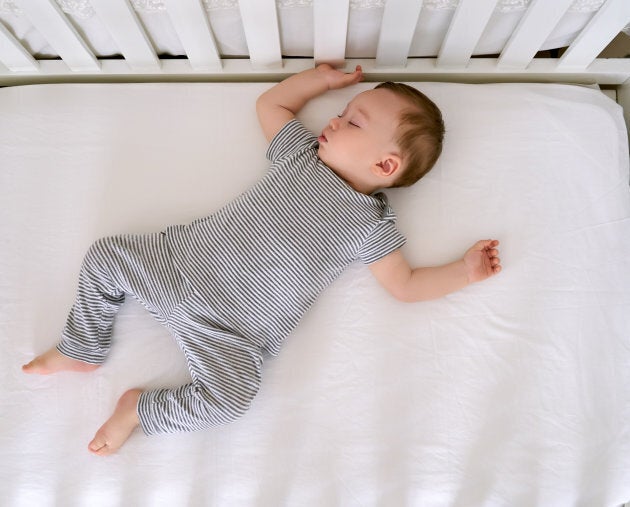Editor’s note: This story was originally published in 2017. Daylight saving time ends in 2019 on Nov. 3 at 2 a.m.
Daylight saving time (DST) in the fall means darkness by dinnertime, but at least we get to sleep an extra hour in the morning, right?
Sure. Unless you have a baby.

Babies and toddlers, who are notoriously bad at reading clocks, can have a difficult time adjusting to daylight saving time, commonly referred to as daylight saving's time. That "extra" hour in the morning could just shift wake-up times an hour earlier (so, if your baby normally wakes up at 6 a.m., she might start crying for you at 5 a.m.), which makes for over-tired, cranky babies later in the day, a sleep consultant noted in Today's Parent.
And it's not just a bleary-eyed parent's lack of sleep that's the worry. Sleep directly impacts a baby's physical and mental development, according to The National Sleep Foundation.
Babies and toddlers, who are notoriously bad at reading clocks, can have a difficult time adjusting to daylight saving.
"Kids function so much better after they've had a good, quality sleep," Dr. Michael Dickinson, the president of the Canadian Paediatric Society, told HuffPost Canada.
Some babies are sensitive
The next daylight saving time is Sunday, Nov. 5, when clocks will be turned back by one hour.
While the majority of babies and toddlers will adjust without any major issues, some will be really sensitive to disruptions in their daily routines, Dickinson said.
That's why it's important for parents to anticipate potential issues in advance and attempt to mitigate sleep disruptions, Dickinson said. New parents may not know whether their baby will be sensitive to the time change or not, so it doesn't hurt to be proactive, he added.
How to help your baby adjust
Some sleep consultants recommend black-out curtains and white noise machines to block out early morning light and traffic sounds.

For toddlers, a customized "quiet time box"— a box of quiet activities like books and puzzles in the bedroom — can help your little one relax until they fall (back) asleep, according to sleep consultant Alanna McGinn.
A baby's routine can also be gradually shifted starting a few days in advance of daylight saving, Dickinson told HuffPost Canada. Try moving bedtimes and nap times ahead by 15 minutes every couple of days for the week leading up to the clock change, Dickinson said.
Shifting sleep times
If baby normally goes to sleep at 7 p.m., put them to bed at 7:15, then 7:30, then 7:45, and then 8 p.m. in the days leading up to "fall back." That way, when the new 7 p.m. is really 8 p.m., baby will be more ready.
And hopefully that will translate to them sleeping until their usual wake-up time, too.

"Sometimes that's all it takes for a baby to gradually shift over to the new routine," Dickinson said.
For spring daylight saving time, shift sleep times back by 15-minute intervals.
The bottom line
For families with a fairly open schedule and no set bedtimes, the time change won't be that big a deal, Dickinson said. But for families with, say, a child that needs to be at daycare for a certain time, that's when they'll run into real problems.
"When a toddler has to be at daycare for 8 in the morning, and suddenly we change when 8 in the morning is for that kid, that can be a major game-changer for them," Dickinson said.
Parents just need to be patient and stick to their routine, and hopefully baby will be back on track in a few days, he said.
Also on HuffPost Canada: